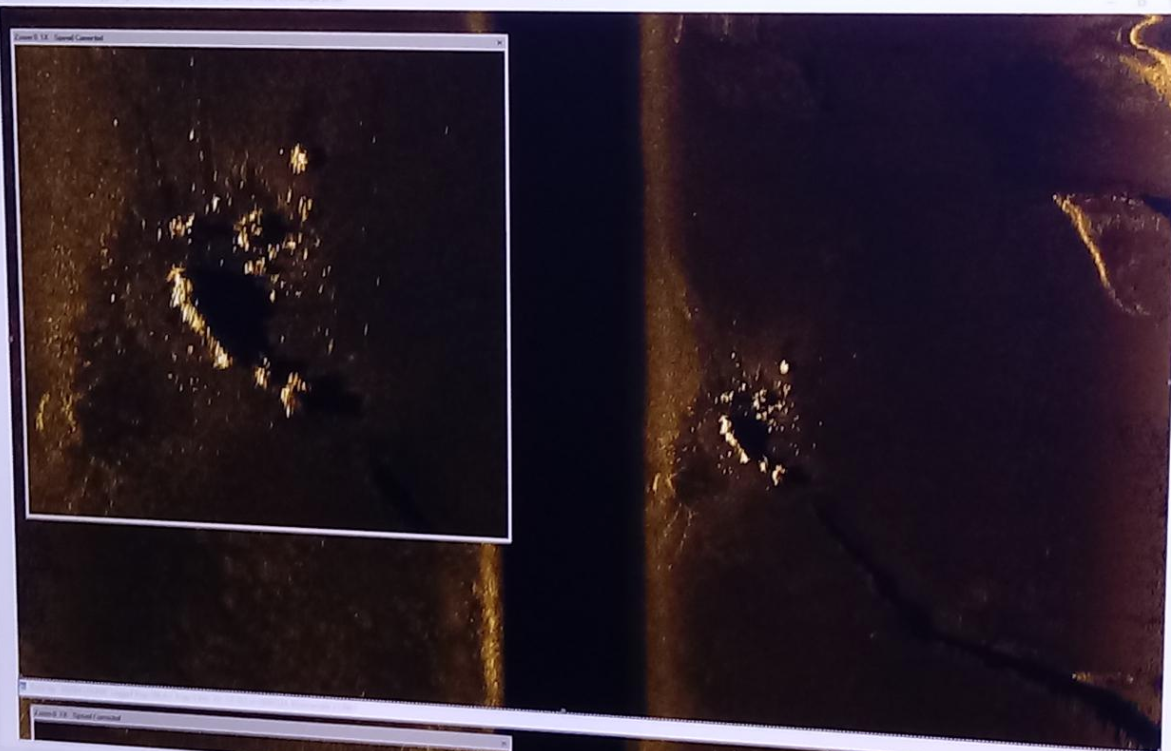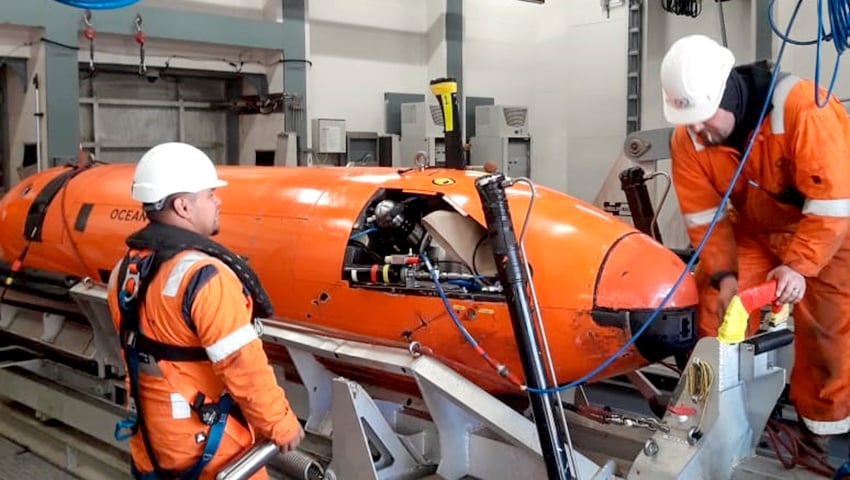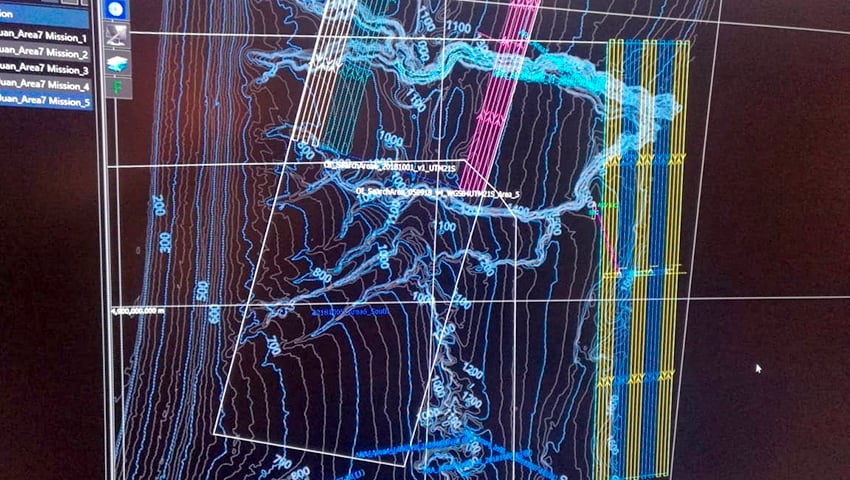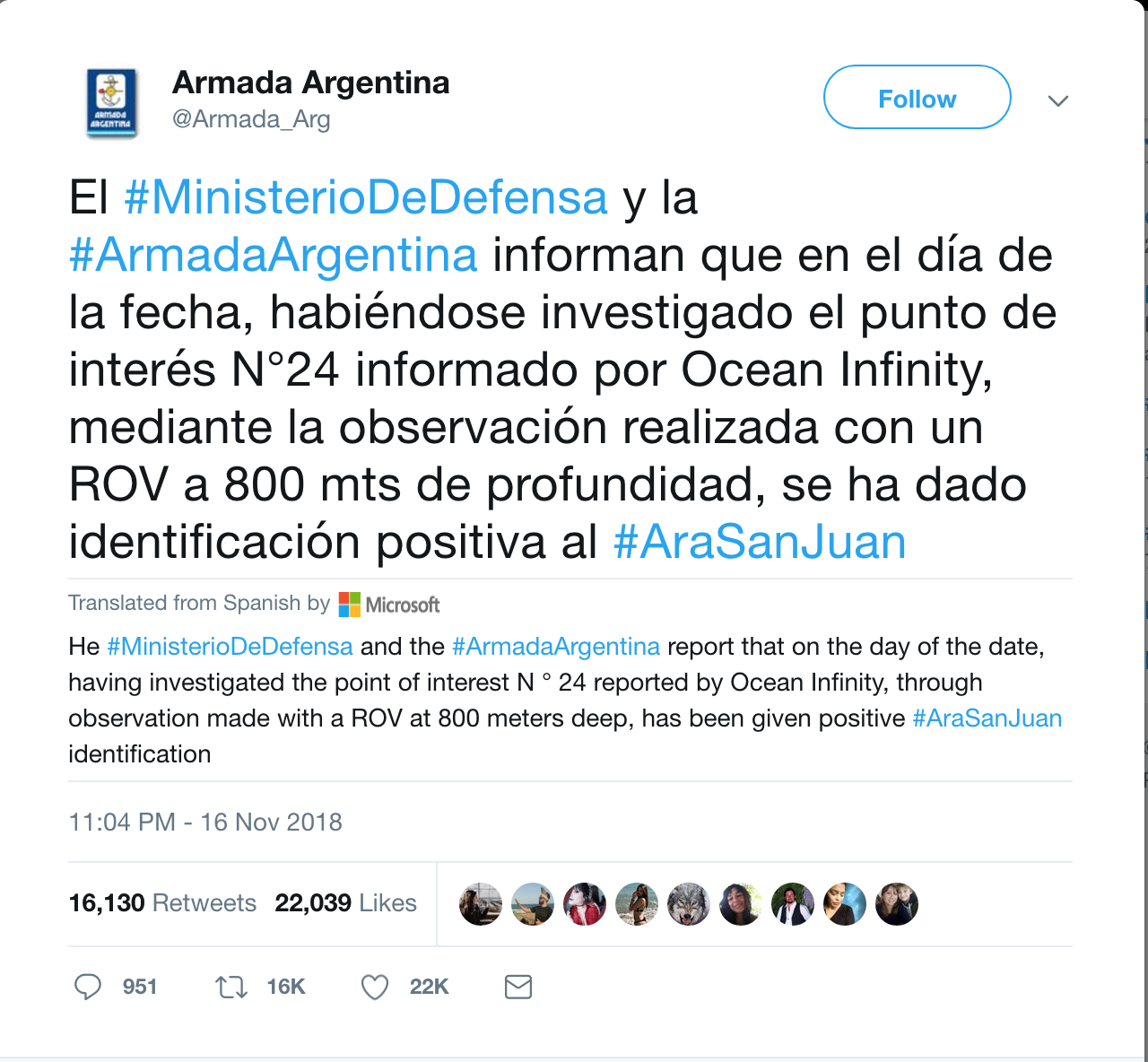
After a year-long search, the wreckage of the missing Argentine submarine ARA San Juan (S-42) was found late Friday night by Texas-based underwater mapping firm Ocean Infinity.
San Juan’s last communication occurred on November 15, 2017. The sub was found resting in a ravine about 3,000 feet below the surface, about 323 nautical miles east of Comodoro Rivadavia in the Atlantic Ocean, according to a statement released by Ocean Infinity.
“Our thoughts are with the many families affected by this terrible tragedy. We sincerely hope that locating the resting place of the ARA San Juan will be of some comfort to them at what must be a profoundly difficult time. Furthermore, we hope our work will lead to their questions being answered and lessons learned which help to prevent anything similar from happening again,” Oliver Plunkett, Ocean Infinity chief executive, said in the statement.
#ARASanJuan #LaBúsquedaContinúa Actualización: La empresa informó nuevo punto de interés en el Sitio 1 área 15A-4, a 800 mts de profundidad. El punto de interés tiene una dimensión de 60 mts de longitud. Hora de arribo al área para iniciar investigación 19:00 hs aproximadamente. pic.twitter.com/l5k8p8Zjye
— Armada Argentina (@Armada_Arg) November 16, 2018
San Juan’s crew of 44 sailors were presumed dead about 15 days after the German-made TR-1700 submarine with diesel and battery power went missing. The Argentine Armada continued searching for the wreckage, and Ocean Infinity, according to media reports, is due to receive a $7.5 million bonus for finding the sub.
Ocean Infinity was brought to help the search because of the advanced sensors and imagery it employs on its fleet of autonomous underwater vehicles (AUVs). The firm was nearing the end of the first of two contracted 60-day search windows when it zeroed in on a promising sonar hit Friday afternoon.
Data retrieved from Ocean Infinity’s five AUVs led searchers to position their research vessel Seabed Constructor over a shape described as nearly 200 feet long – roughly the size of San Juan.

At 11 p.m. local time, Ocean Infinity launched a remotely operated underwater vehicle (ROV), which was tethered to Seabed Constructor, to get better images of the site.
The Ocean Infinity team found San Juan on the part of the ocean floor near where the continental shelf drops off. Searchers had several clues to follow, such as where the sub was when it reported water had entered through its snorkel and shorted out batteries, the weather and current conditions of the day. An underwater explosion in the area, detected by international anti-nuclear proliferation monitors, was determined non-nuclear and long suspected to be an important clue.
However, challenging underwater terrain full of large rocks, trenches, and a steep drop-off the continental shelf complicated the search, Plunkett told USNI News in a recent interview.
“There’s some quite interesting sea life and geographical features. It’s extraordinary how many submarine-shaped and -sized rocks are down there,” Plunkett previously said. “There’ve been a number of times the guys on the ship got excited because there’s something 40 meters long, 5 meters wide, 6 meters high, and it’s turned out to be wrong. It’s truly astonishing.”
When Ocean Infinity team found promising locations to search, the team would generally do one of two things – either send an AUV back to the site, but for a much closer look, or send the ROV which provides live video and imagery of the site. Seabed Constructor has a crew of about 40 sailors and technicians.

However, near midnight on Friday, images captured by the ROV sent from Seabed Constructor confirmed this sonar hit was indeed the missing San Juan.
The Argentine Armada quickly announced the finding on its website and in tweets that Ocean Infinity had found San Juan. Three Argentine Naval officers and four family members of the lost submarine crew were onboard Seabed Constructor when the sub was located, according to the Argentine Navy.
Plunkett, in his statement released Saturday, thanked the Argentine Navy, the United Kingdom’s Royal Navy, and the U.S. Navy’s Supervisor of Salvage and Diving for support including providing technical information about how submarines operate underwater and with providing expert analysis of data recovered from the AUVs.






